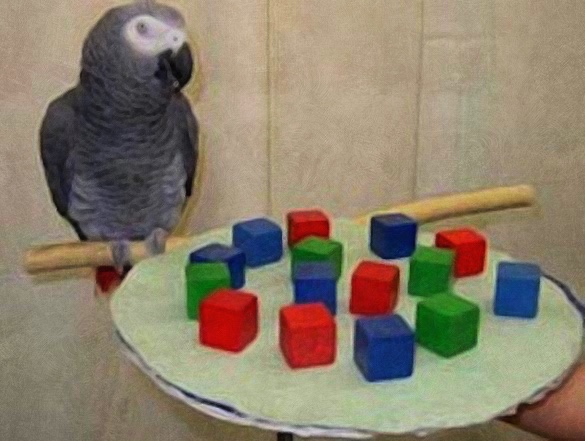Animal Intelligence and Language, Part 3

My good friend Jeff Mann, the true Yard Ramp Guy, has asked me to revisit some of my original posts. This week in my From the Archives series: Part 3 of my talking to the animals thingamabob.

Communication: Many Forms
Years ago, gibbons were thought to be one of the least intelligent apes. They repeatedly failed intelligence tests that other apes passed with ease, and they were quickly written off as stupid.
Then a group of researchers proposed something – seemingly obvious in retrospect – that was revolutionary at the time: Because gibbon hands weren't physically able to pick up objects from flat surfaces in the way other apes were capable, the researchers shouldn't be giving gibbons the same intelligence test as other apes.
When the researchers changed the test to better suit gibbon hand shape, the gibbon test scores skyrocketed, quickly landing alongside the other apes.
There's an important lesson to learn here. Summed up, we might say that judging others solely by our own standards might not be the best strategy ever.
You might be wondering why I’m starting a post about whales, elephants, and dolphins by talking about gibbons. It's for this exact lesson: our past attempts to crack the code of their conversations might have been foiled for similar reasons as the gibbon example.
Let’s take a look at elephants first. They are tool users, have fantastic memories, are socially gregarious, are self-aware (can identify themselves in a mirror), and are generally agreed to be one of the most intelligent species in the animal kingdom. But what about language?
One of our biggest clues comes from a few interesting stories about elephants traveling long distances to hold wakes. Elephants are notorious for mourning their dead. We know that they’ve also done this for humans, even going so far as to give them burials. When celebrated elephant activist Lawrence Anthony died, two herds of wild elephants that Anthony had rehabilitated traveled from hours and hours away to hold a two-day wake outside of his house. How'd they know?
Well, it turns out that elephants are capable of generating incredibly loud noises that travel for miles and miles. Amazingly, those “loud” noises are too low for humans to hear. They can talk with other elephants at great distances and, apparently, are capable of conveying fairly complex information.
It goes deeper than that. Elephants appear to have massive numbers of learned behaviors—not just tool-using skills but also, apparently, cultural ones. Researchers have discovered surprisingly different social structures between herds, even among the same species. It would seem utterly astonishing if this was all accomplished without language of some sort.
Similar traits apply to dolphins and whales. Both are capable of making noises well above and below our hearing ranges. Both are also incredibly intelligent and social.
If we want to learn whether elephants, dolphins, whales, or other species truly have language—or, even more dauntingly, learn to understand or even speak it—we'll need to learn to start understanding how the lifestyles and physiologies of these animals would alter their needs and abilities in terms of communication.
We can't merely judge them by human standards.
Yard Ramp Guy Blog: The Inclined Plane in Verse
This week, my friend The Yard Ramp Guy ends the year with a ridiculously fun riff on an old Christmas chestnut. The Mann can sell ramps, and he can rhyme. Bravo.
Sing along HERE.






